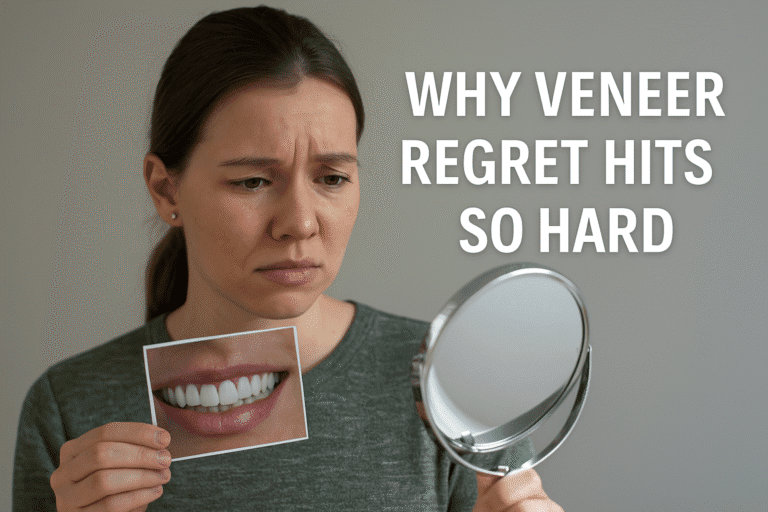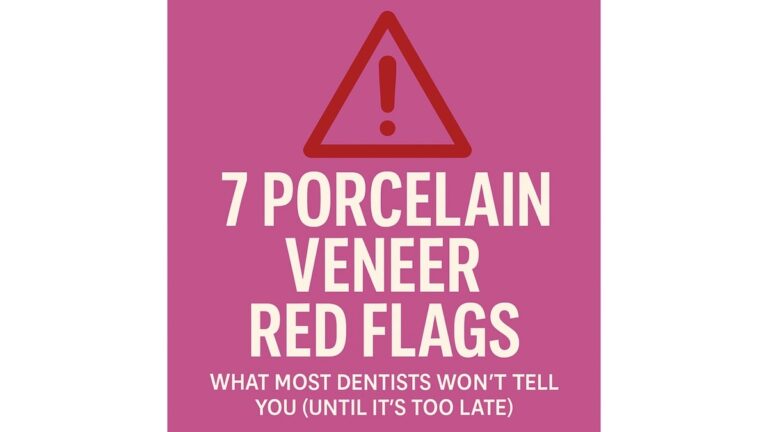How Dental Materials May Impact Your Hormonal Health
Composite resins are widely used in modern dentistry for their durability, ease of application, and aesthetic appeal.
Yet, as their use grows, so do concerns about the presence of potentially harmful compounds such as BPA (Bisphenol-A) and related substances like bis-GMA (Bisphenol A-Glycidyl Methacrylate) and bis-DMA (Bisphenol A-Dimethacrylate).
These compounds are known to have endocrine-disrupting properties, and understanding their effects is crucial for making informed choices about dental health.
This guide explores these compounds, their potential health risks, and their prevalence in dental materials, including the bonding agents used with porcelain veneers.

Understanding BPA, Bis-GMA, and Bis-DMA
BPA is a synthetic chemical commonly found in plastics and resins. It has garnered attention as an endocrine disruptor, meaning it can interfere with the body’s hormonal system. BPA specifically mimics estrogen and has been linked to health issues such as developmental and reproductive problems, certain cancers, and metabolic disorders.
Bis-GMA and bis-DMA are derivatives of BPA and are frequently used in dental composite resins. Although not identical to BPA, these compounds share structural similarities and are utilized in dental materials to provide the strength and wear resistance essential for restorative work. However, due to their connection to BPA, concerns remain about their safety and potential health risks.
Composite Resins and BPA Content
While many composite resins are marketed as “BPA-free,” this term can sometimes be misleading. Composite resins often do not contain pure BPA; however, they may include BPA derivatives such as bis-GMA and bis-DMA, which can degrade and release small amounts of BPA over time.
Factors such as saliva and the mechanical wear of dental materials can contribute to this degradation, though the quantities released are generally minimal.
Nevertheless, research suggests that even small amounts of BPA and related compounds can accumulate in the body and may pose long-term health risks, particularly for children and pregnant women who might be more vulnerable to endocrine disruptors. This has led to increased demand for BPA-free or alternative dental materials.
Porcelain Veneers: Bonding Agents and BPA
Porcelain veneers are commonly used to improve the appearance of teeth. Although the veneers themselves are made from ceramic and are BPA-free, the bonding agents used to attach them may contain BPA-related compounds. Here is an overview of the veneer bonding process and its associated materials:
- Etching: The tooth is prepped with phosphoric acid, creating a rough surface that allows for better adhesion. Some cases also involve hydrofluoric acid etching on the porcelain to enhance the bond.
- Bonding Agent Application: Bonding agents containing methacrylate-based resins, such as bis-GMA, are applied to the tooth and veneer surfaces. These compounds help form a durable connection between the tooth and veneer.
- Placement and Curing: The veneer is positioned on the tooth, and a curing light is used to activate the adhesive, solidifying the bond.
While the BPA exposure from these bonding agents is generally low, patients with concerns can choose alternative materials. BPA-free options, including agents based on UDMA (urethane dimethacrylate) or TEGDMA (triethylene glycol dimethacrylate), are available and are often marketed as biocompatible and hypoallergenic.

Endocrine Disruptors and Health Concerns
Endocrine disruptors like BPA can mimic, block, or alter hormone function, leading to a range of health issues. These include developmental and reproductive problems, immune system disruption, cancer risk, and metabolic disorders such as obesity and diabetes.
Due to these potential risks, many patients seek to reduce their exposure to such compounds, particularly in dental treatments.
Safer Bonding Agent Alternatives
To meet the growing demand for safer materials, manufacturers now offer various alternatives to traditional bonding agents:
- BPA-Free Bonding Agents: These materials, often using UDMA or TEGDMA, provide similar adhesion without the risks associated with BPA derivatives.
- Self-Etching Adhesives: Simplifying the process, self-etching adhesives combine etchants and primers and may eliminate the need for bisphenol compounds entirely.
- Universal Adhesives: These adhesives are compatible with multiple restorative materials and are often designed with BPA-free formulations.
Making Informed Choices
If you’re concerned about BPA and related compounds in dental treatments, here are some tips for ensuring a safer experience:
- *Ask Your Dentist: Inquire about the materials they plan to use and ask specifically for BPA-free options.
- Discuss Low-Exposure Techniques: Dentists can minimize BPA release by thoroughly polishing and rinsing composite restorations after placement.
- Maintain Good Oral Hygiene: Proper oral hygiene can reduce the wear of dental materials, potentially limiting BPA release over time.
- Stay Informed: Research materials and stay updated on safer dental options, particularly if you have health concerns related to hormone disruption.
Conclusion
While the risks associated with BPA and its derivatives in dental materials are generally low, being aware of the potential health implications allows for informed decision-making. Safer alternatives are available for those who prefer to avoid these substances, so having proactive conversations with your dental professional is key. With the right information, you can achieve your desired dental results while making choices aligned with your health priorities.
If you have questions about this article, need help understanding your options, or want to know what to ask during a consultation, we’re here to help. Just leave us a message — even a quick question like:
- “Do you know any qualified dentists who offer enhanced composite resin veneers?”
- “How do I know if this is right for me?”
- “What are the typical costs among providers for enhanced composite resin veneers?”
- “What should I ask my dentist before starting treatment?”
- “Is there a way to tell if my teeth are healthy enough for this type of veneer?”
- “What’s the difference between traditional bonding and enhanced composite resin?”
Every person’s case is unique, and while we’ll do our best to answer your questions and share helpful insights, always consult a licensed dental professional before making any treatment decisions.






